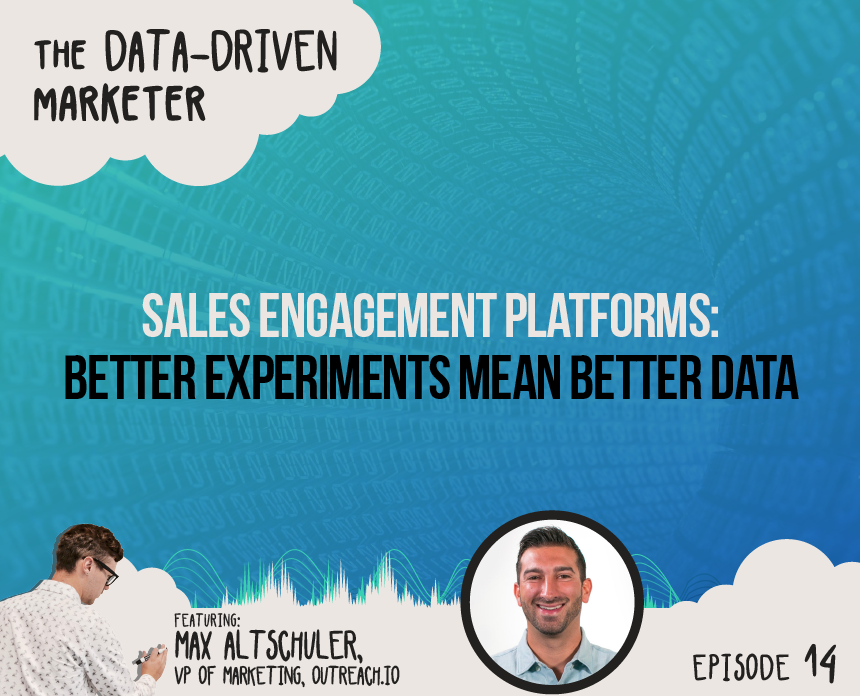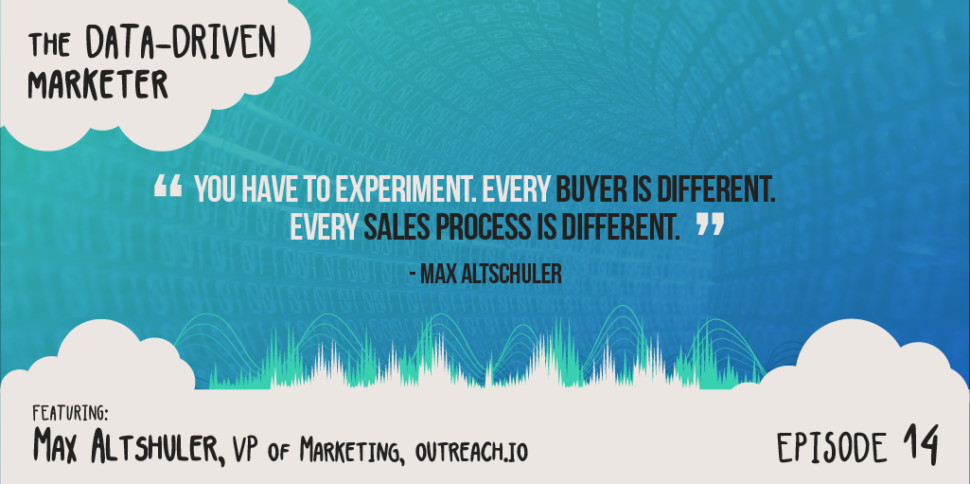
Sales engagement platforms: more experiments mean better data
Today we’re talking about sales engagement. But before we get to that, I’d like to share a thought on sales follow-up:
We’ve all been there: You send a thousand or more emails out and wait for the responses to trickle in.
Some don’t respond at all. The ones that do will either give positive responses, negative responses, or straight up object to something in your email.
Which group do you follow up with first?
Most people prioritize the positive responses, assuming they are most likely to close.
But according to the data—and as you know, we love data here—it’s not the positive responses. You should focus on the ones voicing their objections to the email.
They’re actually the easiest to close.
It might be counterintuitive, but it makes sense when you think about it—they’re the only ones thinking deeply enough about the solutions they need to find objections.
That’s one of the many insights Max Altschuler has learned through experimentation over the years. And experimentation is the key to unlock the best, actionable data.
Max is a bit of a sales and marketing renaissance man: He’s VP of marketing at Outreach, author of “Sales Engagement” and founder of Sales Hacker, the online publication dedicated to sharing valuable B2B sales lessons.
He recently joined us on The Data-Driven Marketer to talk about sales engagement platforms and why experimenting works.
What are sales engagement platforms?
Most of you are probably familiar with marketing or sales automation platforms but may not be with sales engagement platforms.
Sales/lead engagement platforms, like the platform Outreach offers, are one-stop systems of action and activity to connect you to your prospects and customers through a variety of different channels and media.
If you want to send an email, make a phone call, send direct mail or message someone on LinkedIn, you can do all of this from your sales engagement platform.
What makes these platforms particularly unique is they make it easy for the user to set up predetermined sequences.
For example, you can set up a sequence to email a prospect on the first day, call them the second, and leave a voicemail on the third. It helps you stay on top of your prospects, while also letting you manage action items from previous communications.
But the real beauty of sales engagement platforms comes from the A/B testing they make it easy for you to do.
Better sales engagement with experimentation
Having a variety of media and sequences at your disposal lets you easily switch up your approach and keep track of your results.

When should you send messages? What should be in those messages? Are these the right people or types of people to send the message to? What medium works best for your needs?
The automation that sales/lead engagement platforms provide let you essentially clone the answers your best reps give to these questions.
In practice, that might look something like this: All your best reps know not to send another email to an out-of-office prospect until they return, but maybe some others on the team might forget—or worse—forget to send the email after the prospect returns.
Your sales engagement platform would automatically understand the person is out of office, pause its sequence, and restart the sequence when the person returns. That way, your best reps’ knowledge is integrated into your whole team’s workflow automatically.
But what if the answer isn’t already known, like the objection emails we talked about before?
Well, these answers will jump out from the data you get back from experimenting with various sequences and media.
And knowing the answers will let you move onto more experiments, confident that you know what’s already working.
Experimenting is better than advice
Just because something works for others, doesn’t mean it’ll work for your company.
There are no silver bullets.
That’s why the ability to run your own experiments is so valuable. You don’t just learn what works, you learn what works for you.

Integrating so much information into your sales engagement processes lets you take the blanket advice given by others and see whether it pays off for you. Maybe others can say a particular practice was the key to their success, but you’ll have the numbers to show it’s just not working for you.
Data also lets you test out your own ideas and make adjustments where necessary to your existing practices.
And this can save you a lot of time and energy.
Is sending direct mail, a video attachment on an email, or an email before a phone call helping you close? Is it creating brand recognition?
Or is it wasting time?
Maybe you’ve been sending packages to prospects who are salespeople and seen great results, but does that mean the same strategy will work on CIOs?
Experiment and find out!
Ultimately, sales/lead engagement platforms give you the tools you need to compare different strategies and know why you’re doing what you do.
Instead of adopting strategies because they worked for others or they sound like they work, you’ll be adopting techniques proven to work specifically for you.
For more interviews from the Data-Driven Marketer podcast, check us out on Apple Podcasts, or at this link.

Leave a comment